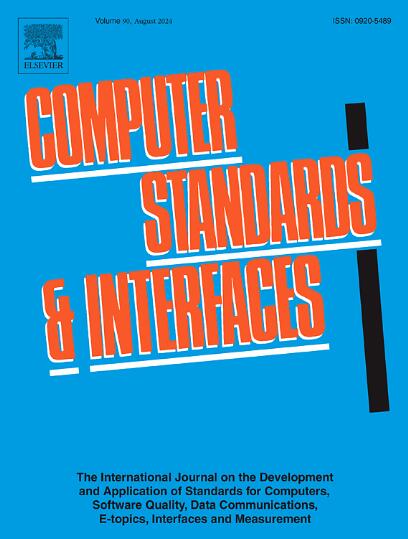Software defect prediction using graph sample and aggregate-attention network optimized with nomadic people optimizer for enhancing the software reliability
IF 3.1
2区 计算机科学
Q1 COMPUTER SCIENCE, HARDWARE & ARCHITECTURE
引用次数: 0
Abstract
The major objective of Software Defect Prediction (SDP) is to detect code location where errors are likely to occur to focus testing efforts on more suspect areas. Therefore, a high-quality software is developed that takes lesser time without effort. The dataset used for SDP usually contains more non-defective examples than defective examples. SDP is an important activity in software engineering that detect potential defects in software systems before they occur. For that, this paper proposes a Software Defect Prediction using Graph Sample and Aggregate-Attention Network optimized with Nomadic people Optimizer for enhancing the Software Reliability (graphSAGE-NPO-SDP). Here, the data are taken from Promise Repository dataset and given to the pre-processing. The pre-processing is done by normalization techniques of Min-Max Scaling. After preprocessing, the features are selected under Univariate Ensemble Feature Selection technique (UEFST). The classification process is performed by graphSAGE. The classification results are classified as defect class and non-defective class. The performance metrics, like Accuracy, Execution time, F-measure, Precision, Root Mean Square Error, Sensitivity, and Specificity is examined. The proposed graphSAGE-NPO-SDP method attains higher accuracy 32.45 %, 36.48 % and 28.34 % when compared to the existing models: Complexity-based over sampling technique in SDP (COT-ACI-SDP), Classification Method for SDP utilizing multiple filter feature selection approach (MLP-SDP), Boosted WOA-SDP and hybrid model depending on deep neural network based for SDP under Software Metrics (DNN-GA-SDP) respectively.
利用图样本进行软件缺陷预测,利用游民优化器优化集中注意力网络,提高软件可靠性
软件缺陷预测(SDP)的主要目标是检测可能发生错误的代码位置,从而将测试工作集中在更可疑的区域。因此,开发一个高质量的软件需要更少的时间和精力。用于SDP的数据集通常包含比缺陷样本更多的非缺陷样本。SDP是软件工程中的一项重要活动,它可以在软件系统中潜在的缺陷发生之前检测出来。为此,本文提出了一种基于图样本和游牧民族优化器优化的聚集注意网络的软件缺陷预测方法,以提高软件可靠性(graphSAGE-NPO-SDP)。在这里,数据取自Promise Repository数据集并交给预处理。预处理采用最小-最大缩放归一化技术。预处理后,采用单变量集成特征选择技术(Univariate Ensemble Feature Selection technique, UEFST)选择特征。分类过程由graphSAGE执行。分类结果分为缺陷类和非缺陷类。性能指标,如准确性,执行时间,f测量,精度,均方根误差,灵敏度和特异性进行检查。本文提出的graphsag - npo -SDP方法与现有的基于复杂度的SDP过采样技术(cots - aci -SDP)、基于多滤波器特征选择方法的SDP分类方法(MLP-SDP)、基于深度神经网络的基于软件度量的SDP混合模型(DNN-GA-SDP)相比,准确率分别达到了32.45%、36.48%和28.34%。
本文章由计算机程序翻译,如有差异,请以英文原文为准。
求助全文
约1分钟内获得全文
求助全文
来源期刊

Computer Standards & Interfaces
工程技术-计算机:软件工程
CiteScore
11.90
自引率
16.00%
发文量
67
审稿时长
6 months
期刊介绍:
The quality of software, well-defined interfaces (hardware and software), the process of digitalisation, and accepted standards in these fields are essential for building and exploiting complex computing, communication, multimedia and measuring systems. Standards can simplify the design and construction of individual hardware and software components and help to ensure satisfactory interworking.
Computer Standards & Interfaces is an international journal dealing specifically with these topics.
The journal
• Provides information about activities and progress on the definition of computer standards, software quality, interfaces and methods, at national, European and international levels
• Publishes critical comments on standards and standards activities
• Disseminates user''s experiences and case studies in the application and exploitation of established or emerging standards, interfaces and methods
• Offers a forum for discussion on actual projects, standards, interfaces and methods by recognised experts
• Stimulates relevant research by providing a specialised refereed medium.
 求助内容:
求助内容: 应助结果提醒方式:
应助结果提醒方式:


